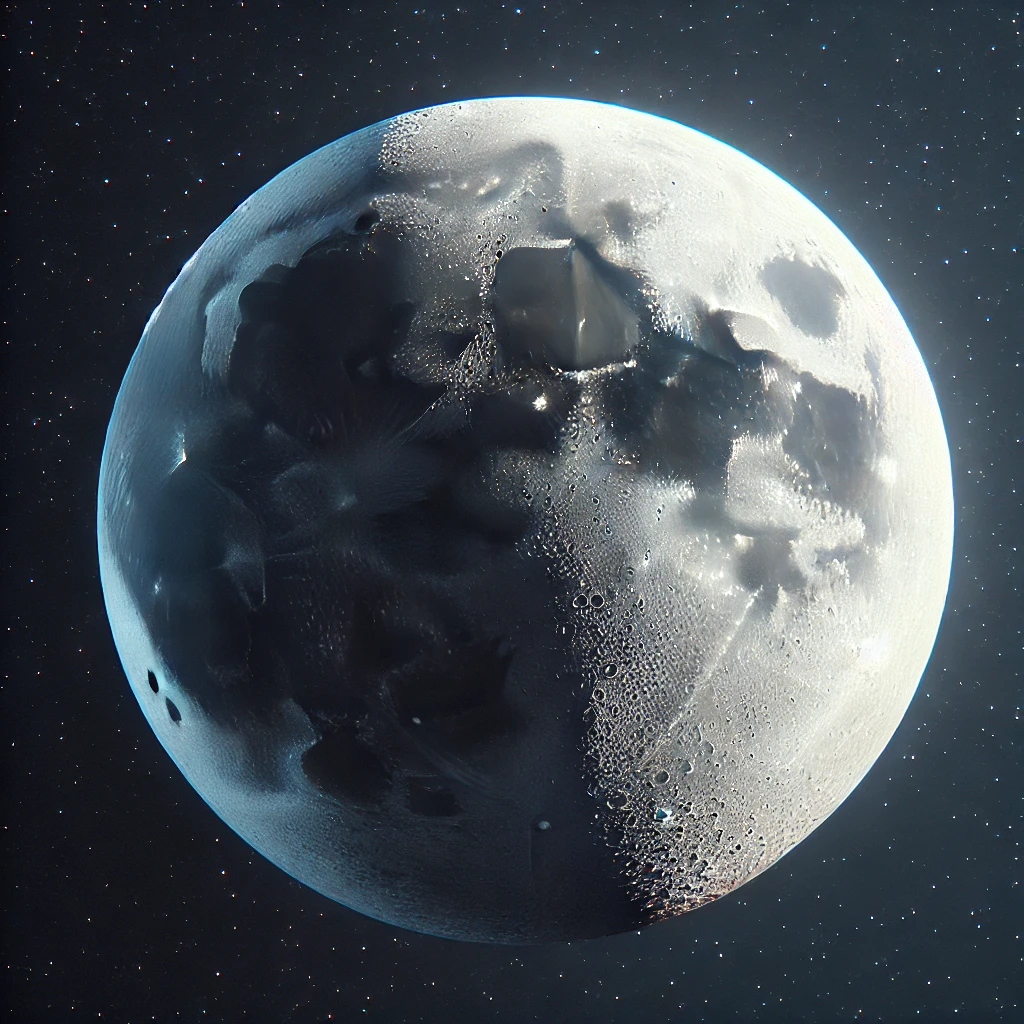If you’ve ever looked up at the sky and wondered how the moon goes from full to new, you’re not alone. The phases of the moon have fascinated people for centuries and are tied to many aspects of our daily lives—whether you’re a gardener planting by the moon, someone looking to track a specific moon cycle, or just a sky-gazer. Understanding the moon phases in order is key to appreciating the natural rhythm of our planet and its satellite.
Let’s dive into the phases of the moon, from the New Moon to the Full Moon, and everything in between.
1. New Moon
The Start of the Cycle
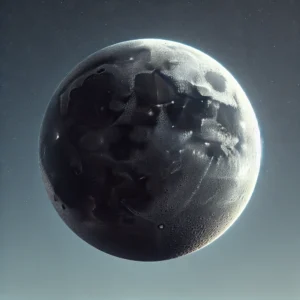
Imagine this: You’re standing outside at night, looking up at the sky. The moon is nowhere to be seen. It’s not that the moon disappeared, it’s just that during the New Moon phase, the moon is positioned between the Earth and the Sun. The side of the moon that’s illuminated by the Sun is facing away from us, leaving the dark side of the moon to face Earth.
Key Features:
- The moon is not visible to the naked eye.
- This is the beginning of the lunar cycle.
- It’s a great time for new beginnings, planning, and setting intentions.
Fun Fact:
Many cultures and traditions believe that the New Moon is the perfect time to start new projects, as the moon’s energy is focused on new beginnings and fresh starts. If you’re looking to track this phase precisely, consider using a Moon Phase Calculator to find the exact date and time of the New Moon for your location.
2. Waxing Crescent Moon
The Moon Starts to Show Its Shape
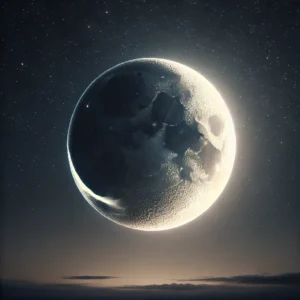
After the New Moon, the moon begins to emerge from the shadows, and we see the first sliver of light. This is known as the Waxing Crescent Moon. It’s like a sliver of light slowly becoming more prominent each night.
Key Features:
- Only a small crescent of the moon is visible.
- The moon’s illumination is increasing.
- This phase lasts for about a week.
Fun Fact:
The Waxing Crescent is a time of growth and anticipation. As the moon starts to “wax” (or grow), it is often associated with the early stages of a project or journey. It’s a time to focus on goals and the steps that need to be taken.
3. First Quarter Moon
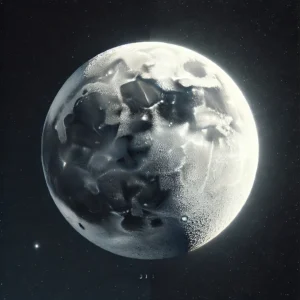
Halfway There
Now, we’re getting to a phase where half of the moon is visible. The First Quarter Moon occurs about a week after the New Moon. At this point, the moon is half illuminated by the Sun, and half is in shadow.
Key Features:
- The moon looks like a perfect half-circle.
- It’s the 90-degree phase in the lunar cycle.
- A time of decision-making, action, and overcoming obstacles.
Fun Fact:
The First Quarter is sometimes called the “half moon.” During this time, there’s often a push for change or growth, as the moon’s energy is focused on overcoming challenges and pushing through obstacles.
4. Waxing Gibbous Moon
The Moon is Almost Full
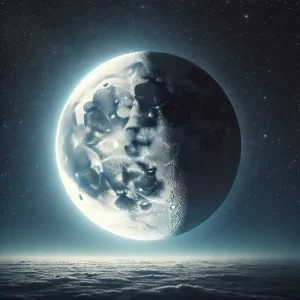
Next up, we enter the Waxing Gibbous phase. This is when the moon is just shy of being fully illuminated. Most of the moon is now visible, with only a small portion left in shadow.
Key Features:
- More than half of the moon is illuminated.
- The moon is nearing its peak, just before becoming a Full Moon.
- This phase is a time of refinement, development, and preparing for the culmination of the cycle.
Fun Fact:
During the Waxing Gibbous, you’re in a period of intense growth. It’s about fine-tuning, putting in those last bits of effort to make sure things are heading toward completion. Think of it as the final stretch before reaching a goal.
5. Full Moon
The Moon at Its Brightest
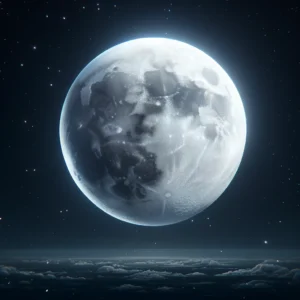
Here it is—the big moment! The Full Moon is the most well-known phase of the moon. During this phase, the entire face of the moon is fully illuminated by the Sun. It’s a time of culmination, reflection, and completion.
Key Features:
- The moon is fully illuminated.
- It’s the peak of the lunar cycle.
- This phase is often linked with heightened emotions, energy, and clarity.
Fun Fact:
Many people believe the Full Moon brings intense energy, and it’s often associated with heightened creativity, emotions, and power. It’s considered a time of release, where things come to fruition, and there is a sense of completion. If you want to track the exact dates of each Full Moon, a Moon Phase Calculator can help you pinpoint when it will occur in your specific location.
6. Waning Gibbous Moon
The Moon Starts to Fade

After the Full Moon, the moon begins to wane, or decrease in illumination. The Waning Gibbous is the phase where the moon starts losing its brightness but is still more than half visible.
Key Features:
- The moon starts to shrink in size, losing its illumination.
- This phase is a time for reflection and gratitude.
- It lasts about a week.
Fun Fact:
This phase invites you to reflect on what has been accomplished. It’s often linked with gratitude, where you look back on what you’ve learned and experienced during the previous cycle.
7. Last Quarter Moon
Another Half Moon
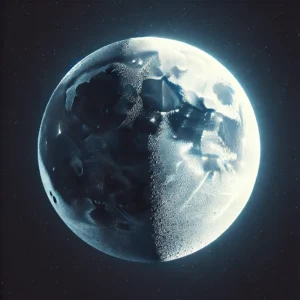
Just like the First Quarter, the Last Quarter Moon is another half-moon, but this time the opposite side is illuminated. The moon is again half-visible, but the light is waning.
Key Features:
- The moon is half illuminated, but the opposite side from the First Quarter.
- A time for closure, releasing, and making necessary changes.
- This phase marks the final days of the lunar cycle.
Fun Fact:
The Last Quarter is often a time of introspection. It’s when you take stock of what’s worked and what hasn’t, making adjustments as needed before the cycle begins again. It’s about clearing the slate and preparing for the next New Moon.
8. Waning Crescent Moon
The Final Phase Before the New Moon
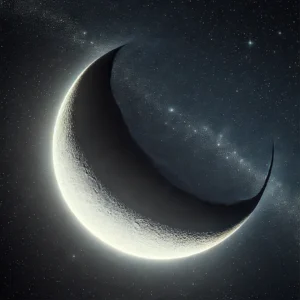
As the moon’s light continues to diminish, the Waning Crescent is the final phase of the lunar cycle. It’s the last sliver of light before the moon disappears completely during the New Moon.
Key Features:
- Only a small crescent of light is visible.
- A time of rest, renewal, and preparation for new beginnings.
- It’s the phase of closure and release.
Fun Fact:
The Waning Crescent is often a time for rest and self-care. It’s a great moment to let go of things that no longer serve you, making room for the fresh energy of the next New Moon.
Track the Moon Phases With Precision
Now that you’ve got the phases of the moon in order, you might be wondering how to track them accurately. Whether you’re a stargazer, a gardener, or simply interested in aligning with lunar cycles, having an easy way to track these phases is a must. You can use tools like the Moon Phase Calculator to track the moon’s phases down to the exact time and date in your location. This tool is particularly useful for anyone who wants to be precise in their planning or who just enjoys watching the moon’s phases with greater understanding.
Conclusion
The moon goes through a fascinating, predictable cycle that plays a role in many aspects of life on Earth. From the New Moon, which signals new beginnings, to the Full Moon, a time of reflection and culmination, each phase has its own unique energy and purpose. Understanding these phases in order can help you harness their power, whether for personal growth, gardening, or simply enjoying the beauty of the night sky.
Remember, tracking the phases with precision can make your experience even more meaningful. So, if you’re eager to start tracking the moon in your own life, the Moon Phase Calculator can be your best tool to get started! Happy moon-watching!

